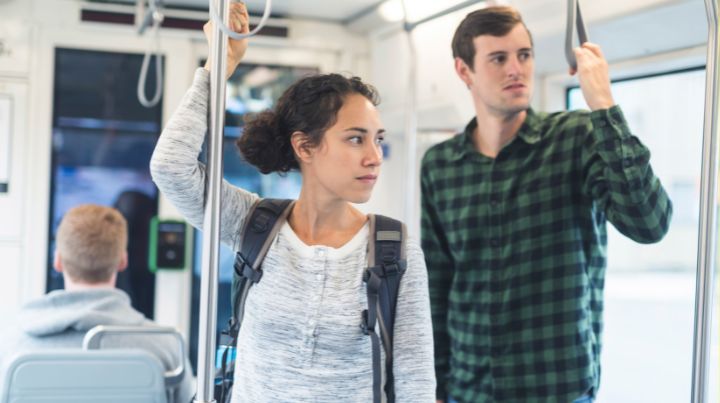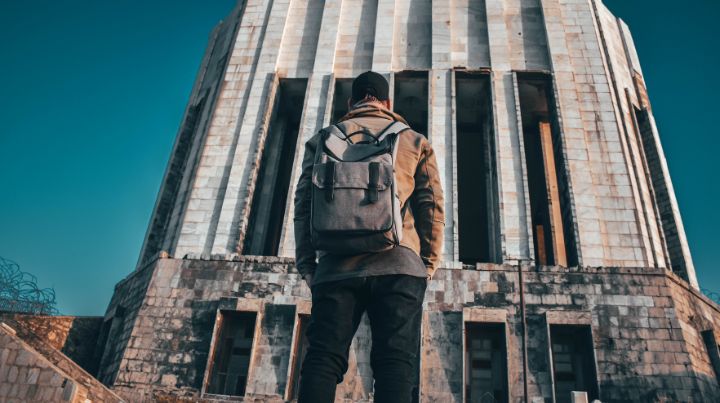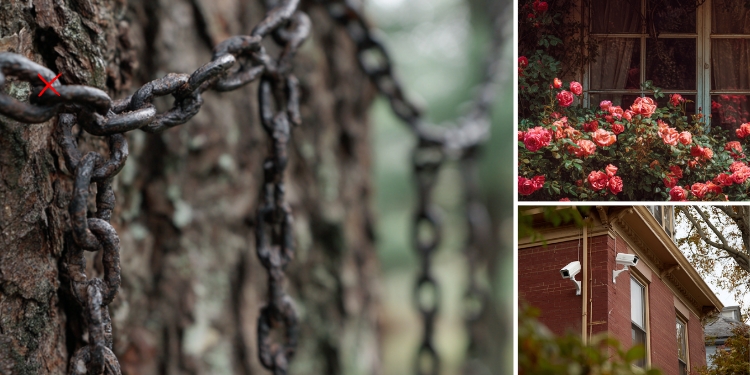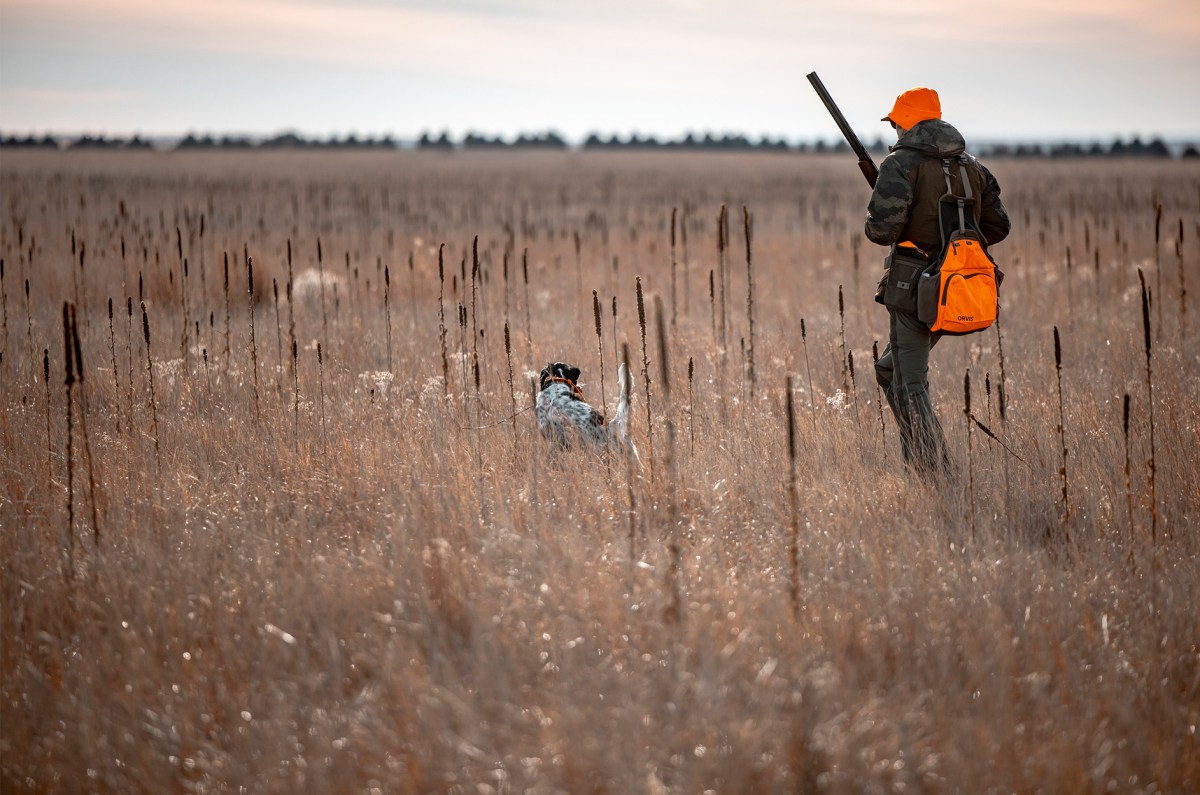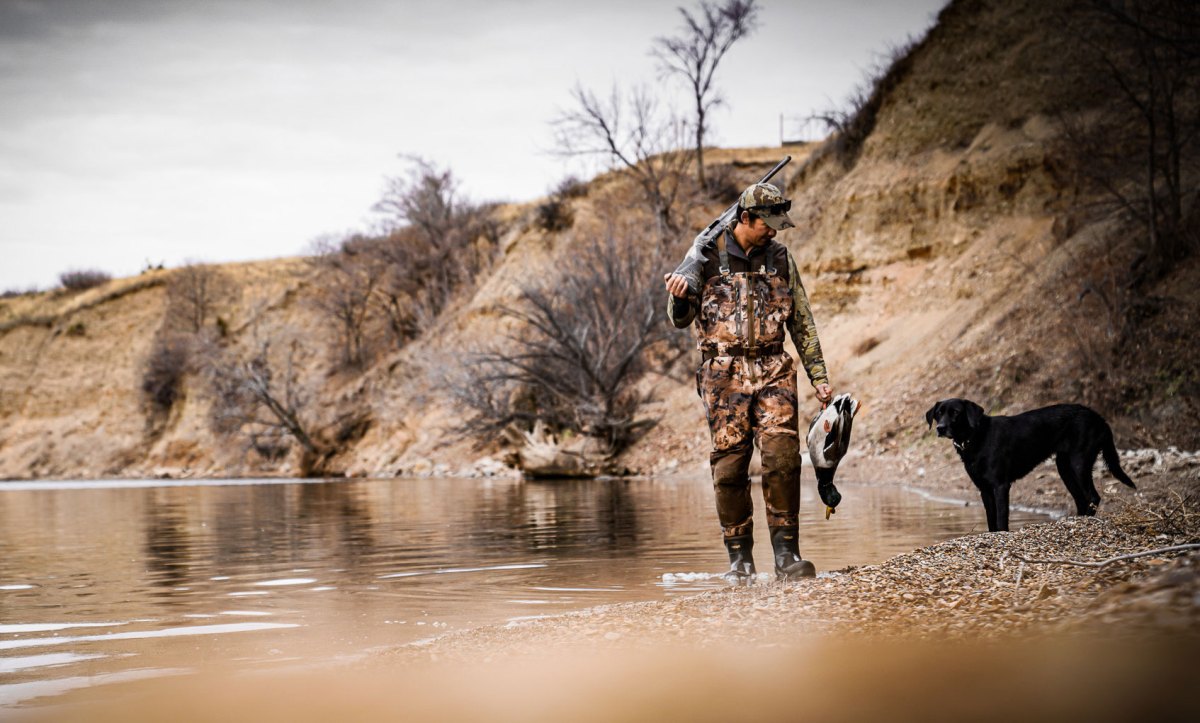Bug-Out Bags for College Students

When my youngest child went off to college in Boston in 2017, I packed him a pretty standard student bug-out bag and hoped he would remember to grab it in an emergency.
I hadn’t given it much thought beyond grabbing one of each of the bug-out bag essentials. I verbally told him what was in there and let him know there was a list of its contents tucked inside.
By the time he graduated in 2021, however, the bag had undergone a great deal of transformation.
Quick Look at What You’ll Learn
Lockdowns Stranded Students
Although I’m a prepper, my son doesn’t always share my enthusiasm for the concept. When the President closed down travel from Europe in March of 2020, my son was sending me photos from the top of the Eiffel Tower in France.
Despite my warnings about the pandemic that seemed to be gaining steam in the US, he had left for Spring Break in Paris the week before. Travel was already seeming a bit iffy, but he had saved all year for the trip and didn’t want to lose it all with a cancellation.
When he finally worked his way back into the US, his University put him under a 14-day quarantine where he was not permitted to leave his dorm room. He was the only one in his Boston brownstone dorm- everyone else was still home for spring break.
Then a few days later, the University closed down completely and unexpectedly. Travel papers were beginning to become required for inter-state travel, and we weren’t sure we could get him home.
While he did get home a few days later, for a while, it looked like he may have to fend for himself and survive on what he could scavenge from the things people left behind before Spring Break and the contents of that bug-out bag.
Assess Your Goals
Where your child attends school and how it relates to your location will alter the type of student bug-out bag you’ll want to make.
Consider the ultimate goal of the bag.
- Does your child attend school in the city? You’ll want to give them the tools to get out quickly.
- Maybe their college is rural, and your goal is to try to get them TO the nearest city. Does the bag need to get them all the way home or just to the outskirts of town?
- Do they have access to a vehicle?
Regardless of these decisions, you will also want to make sure you include the tools your semi-adult will need to source things long-term.
Food
For college students, I recommend high payoff grab-and-go items.
I purchased a multi-pack of these survival calorie bars and threw one at the bottom of the main compartment. Each vacuum pack has 9 bars inside that will provide over 3600 calories total.
I put that at the bottom because it is something he wouldn’t be digging out for a day or two at the very least, and I like to keep things he might need quickly near the top. The five-year shelf life of the bars means you only need to pack them in their bug-out bag once for the whole four-year adventure, which was an added bonus.
I also put in other easy bug-out bag foods like cereal bars, some electrolyte packets, pouches of tuna, beef jerky, single-serve peanuts, and protein bars. Nothing in there requires cooking, so I did not include a dedicated stove.
Remember that candy goes a long way towards lifting spirits. Just don’t put anything in there that’s going to melt all over everything!
Water
If they’re going to travel any distance, they’re going to need to source some water.
I put a new bottle of water in the mesh side pocket each year just to start him out with a small supply. More than that would add too much weight to the bag. By putting it there, it’s easy for him to access.
If he’s traveling through the city in an emergency, I don’t want him opening that bag in public to dig through it if he doesn’t have to. The water bottle is also something that helps to keep him looking gray man as he travels.
Tell your child to save both the bottle and the cap after drinking it. In times of disaster, they’ll want to reuse it.
For the first two years, I had a Lifestraw in his BOB as a way to purify water once the bottled supply was gone. Then I took a survival course myself and realized that, while they are wonderful items to have, it’s not fun to suck some water through one of those while trying to flee an urban disaster.
It takes up a bit more room, but I upgraded him to a Lifestraw bottle after that and made sure he understood how (and why) to use it. I purchased it in a smoky gray so that the filter wasn’t readily visible from the outside. I don’t want anyone noticing it during SHTF.
As we discussed earlier, the emergencies we plan for aren’t always what happens in reality.
If he had needed to spend an extended period of time in the dorm surviving alone, even the Lifestraw bottle would have been annoying long-term.
Aqua-tabs are a great solution for bulk purification, and we added them for senior year. They are lightweight and take up virtually no room. You can fit 100 Aqua-tabs inside an empty Rx bottle. Since the bottles are waterproof, the tabs will stay clean and dry until you need them. This addition allows your student to purify water in much larger quantities, as each packet handles two quarts at a time.
The last water item I included was a sillcock key. In urban settings, they are an excellent way to access the spigots on the outside of buildings. (Think restaurants, hotels, etc.) The sillcock keys will unlock the hook-ups, and they can then harvest the water few others can get to.
Hygiene
It’s possible that your college student may just need to grab their bag to bug out temporarily. A water main break, a power outage, a gas leak… any of these things could lead to a short-term evacuation.
Everyday hygiene items make these types of situations far more bearable. Include travel-sized items of things like toothpaste & toothbrushes, toiletries, hair ties, etc. A pile of baby wipes in a Ziploc bag can be used to improvise an on-the-go shower.
If you have a daughter, include any products uniquely related to feminine hygiene as well.
Disposable masks, goggles, and sanitizer are non-negotiables going forward. A few pairs of nitrile gloves are useful in any medical emergency. Sudden mandates and unexpected travel restrictions make these must-have items for navigating home during a disaster.
Assemble a small yet comprehensive first-aid kit in a dedicated, well-marked pouch. Include a variety of small quantities of commonly used items. Bandages, alcohol wipes, poison ivy or bug repellent wipe packets, over-the-counter medication packets, a self-adhesive ace bandage, Benadryl, and steri-strips are all good items to include.
Add a piece of moleskin as well. If your student isn’t used to walking, they may develop blisters quickly. Remember that the goal here is to minimize their struggle as they work their way home. Moleskin can really make a difference.
If possible, include Iosat pills to help prevent radiation poisoning in the case of a nuclear event, such as war or power plant malfunction.
If your undergrad requires any medication, keep at least one week’s worth in a small, well-labeled container in an easy-to-access location. If they need an epi-pen, store a spare one in the most easily accessible location in the bag. Either the front-most or top pocket is ideal.
Also, store some trauma gear towards the front or top of the bag. In an emergency where seconds count, you’ll want them to be able to reach in and immediately find things like an Israeli bandage or clotting gauze.
Depending on their level of first-aid knowledge, you may or may not want to include a tourniquet.
Fire
Beyond having an initial spark, starting a fire is more about skills than supplies. Most scenarios involving a college student wouldn’t focus too much on fire, but depending on your climate and length of travel distance, it may become necessary.
In addition to making sure they have some fire-starting knowledge, be sure to include a lighter or two at the very least. A cotton ball topped with a squirt of gel sanitizer will burn for close to 30 seconds.
It’s an easy way to get a larger fire going, and they can repurpose cotton and sanitizer from other sections of the bag.
Safety
Much of this aspect will depend on your child’s skill level and comfort with defensive weapons. Be sure to look up the local laws in both the college location and the locations they’ll need to travel through.
If your student does not already have a keychain alarm, you may wish to include one.
Pepper spray is another great item to include. Since you would need to access an item like this quickly, keep it in an outer pocket of their BOB. Tell them to move it to somewhere on their person as soon as the need for bugging out has occurred.
Consider adding a K-Bar spork to the bag as well. The plastic design means it can pass through metal detectors unnoticed, but the spork opens to reveal a dinner knife with quite a bit of spunk. Multi-use items like this are great additions. Pack it near other food items, so it just looks like average cutlery, but show your student where it is and how it opens. If they should ever need to use it defensively, you’ll want to be able to show you had only packed it with culinary intentions.
Lastly, be sure to include a whistle. Make sure it’s a loud one. A disaster at a large dorm may require your student to signal their location to rescue personnel.
Shelter
Most college bug-out bag scenarios won’t involve hacking down branches to make a forest lean-to for the evening or even sleeping outdoors, but there is more to shelter than that.
In most collegiate cases, this category is mostly about keeping them adequately sheltered from the environment as they move from location to location.
Spare socks and underwear will be greatly appreciated for emergencies lasting more than a day. Merino wool socks are my favorite all-season bug-out bag item.
Depending on the climate near their school, you’ll want to include things like some thermals, hats, gloves, etc. Some hand warmers or toe warmers are wonderful if they’re somewhere cold. Spare shoelaces are another good multi-purpose item to have on hand, and keeping your feet protected is critical during a bug-out.
Bivvy bags, aka survival sleeping bags, have come a long way in recent years.
If I were getting ready to repack my college student’s bug-out bag again this year, I would include a bag like this one from Survival Frog. I have one in my own BOB. At 4.7 ounces, it is the size of my hand and takes up virtually no room. They’re much studier than a mylar blanket and are completely waterproof.
A good rain poncho that folds down compactly is another great idea. Disasters often involve lousy weather, and traveling drenched is no fun. If you have the room, this Arcturus poncho can also be unsnapped to form a flat usable tarp. There are also umbrellas that fold very compactly and won’t use up a tremendous amount of space.
I would definitely consider adding an item similar to this if you think your student may have to shelter outdoors in bad conditions. It will go a long way towards making a situation survivable without hogging up the room that another type of shelter might.
Communications
Many of the emergencies that may occur on a college campus won’t involve power outages. Displacement issues often lead to communication problems not because there is no power, but because someone does not have a way to access it.
Keep an extra cellphone charger cable, wall plug, and car adapter in the bag. If possible, include a fully charged power bank. I attach the power cord to the power bank with masking tape.
If your student depletes the power bank but then gains access to an outlet, you want them to be able to recharge it for repeated use. Remember to recharge the power bank each semester, so it is ready to go at any time.
A small, hand-crank radio may go a long way towards keeping your college-aged child informed during a SHTF scenario. Some models even double as hand-crank flashlights.
Light sources are another important communication consideration.
Pack a small, bright flashlight. Include a headlamp so both their hands can remain free. Possibly include a quality lightstick. Glowsticks, while popular in some bug-out bag articles, provide minimal light and mostly serve to point out the presence of the person wearing them.
Other Items to Consider
Your student may need some extra funds to make the unplanned trip. Consider adding an emergency credit card, along with cash in large and small bills, and maybe some quarters. No one will bother much with any change smaller than that during the initial phases of SHTF.
A pre-paid public transit card is another excellent idea if they are in an area that uses it. Anything that facilitates them getting from point A to point B will be useful. If they are fortunate enough to have a car with them on campus, include them on your EZ Pass plan so that tolls are not an issue.
In warmer climates, a travel-size container of suntan lotion is important to include.
Keep a waterproof bag with important papers inside. Include an expired ID, a photocopy of their current ID, a handwritten list of phone numbers, some paper, and a way to write. Rite in the Rain brand notebooks can be used in any weather conditions. If you have the money to spend, you may want to consider one.
Also, place a piece of mail addressed to them at both their home and campus addresses inside. Travel during the pandemic sometimes required people to show proof of residency in order to move from location to location.
A physical, paper map of their school’s city, as well as any maps they may need to make their way home, are essential. A map of the public transportation system would be a nice addition, too.
A deck of cards and a pair of dice can work wonders for mental health and overall morale.
What We Missed
At the beginning of his junior year, my son called from school.
As an English major, he was taking a post-apocalyptic fiction class, which had prompted him and his roommate to break out the bug-out bag and finally take a look inside.
He was calling to tell me that he thought the bag really needed a set of lock picks. Everyone in the books he was studying struggled through their SHTF scenarios by kicking doors in. He thought lockpicks would make the situation easier to handle.
At the time, I told him it was a great point and figured I’d give him some for his birthday when it rolled around the next year.
Well, the pandemic hit before his birthday did. Those lockpicks would have been invaluable if he had been stuck in that dorm alone for any length of time and had to access the food in other rooms to survive.
Since everyone thought they were only leaving for a week, there was lots of edible food in refrigerators that no one ever returned for. Those dorms lay empty for six months before anyone returned.
There are lots of other disaster scenarios where lockpicks would add significant value to a bug-out bag. If adding them, I recommend you purchase a set that comes with practice locks.
Bump keys are another good option that take up even less space, but it’s another skill that requires some practice.
Additional Considerations
- A college student has an advantage because no one really looks twice at a 20-year-old with a backpack. Keep that in mind, and don’t attach anything tactical to the outside of the bag. Don’t ruin a great gray man look by carabining an orange compass onto their BOB.
- Install the What3Words app on your student’s cellphone. It has a unique three words assigned to every 10’x10’ square on the planet. Should your student lose their way, you can find them anywhere using the app.
- Go over the contents of the bug-out bag one by one, so your child knows what is in there. Explain the reasoning behind the items. Even if they think you’re crazy, they’ll remember some of what you’re saying.
- Put a list of contents in the front pocket that lists everything inside. Be sure to tell them where to find the items, too. If the SHTF, you don’t want them crouching down to dig through an open bag of survival items. It exposes them to attack, and their digging takes away most of their situational awareness. I break my list down by location, but you should do whatever will make it easiest for your child to understand.
- Keep a knit beanie somewhere convenient in the bag. They are wonderful for changing your appearance quickly.
- Include enough spare batteries for any items that use them.
- Try to keep the computer sleeve in the backpack empty. You know darn well that they will try to grab that as they leave. You might as well have a place ready for it.
- Consider adding a detachable “Grab List” to the outside of the bag. Instruct your student to use the checklist to grab important items before they leave, time permitting. Without much experience in SHTF situations, your student may panic and not think to do basic things. Include things in order of priority, so if time runs out, the least critical items are the things still undone. Customize the list for your child’s unique situation. Help them to remember critical items.
The kids who were home for spring break when the University went remote for six months had to have their rooms packed up by campus workers and mailed home to them. I’m sure some of those students would have handled their rooms differently if they had known that when they left for break.
It’s important for them to grab their personal must-have items if they are lucky enough to have enough time to do so.
Be sure to emphasize that their safety takes top priority. Some younger people tend to focus on material items during an emergency, not fully realizing the severity of their situations.
Minimize Unwanted Struggle
While you may not be able to prevent disasters and emergencies from affecting your children, providing them with a functional college student bug-out bag can definitely help to minimize the unwanted struggles of a SHTF event of any type.
Has your college student faced a short or long-term bug-out situation? How did they handle it? What are some things they wish they had with them that they didn’t?
Read the full article here




